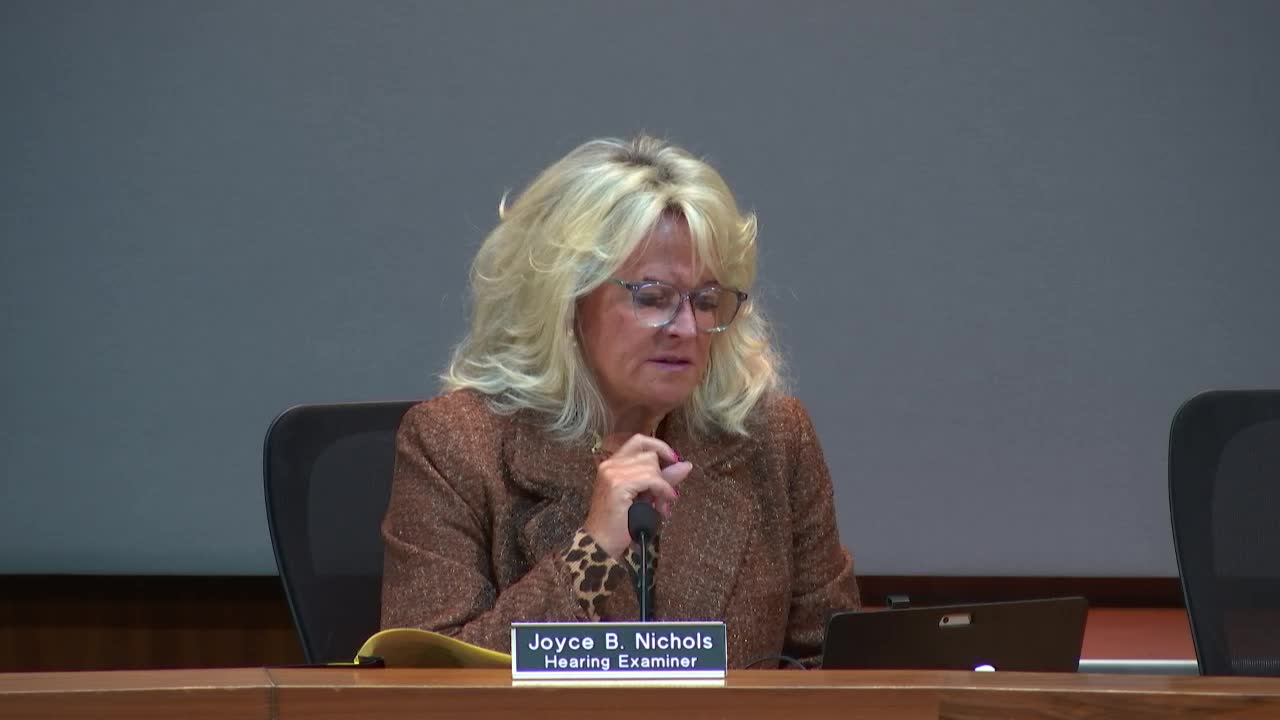Homeowner seeks variance for shed on unique double lot in Ellicott City
March 04, 2025 | Howard County, Maryland
This article was created by AI summarizing key points discussed. AI makes mistakes, so for full details and context, please refer to the video of the full meeting. Please report any errors so we can fix them. Report an error »

In a recent meeting in Howard County, Maryland, a resident passionately defended their request for a variance to build a shed on their property, highlighting the unique characteristics of their lot. The discussion unfolded in a setting where community members gathered to voice their concerns and aspirations regarding local regulations.
The resident explained that their property spans over an acre, making it a double lot in a neighborhood where most properties are only half an acre. This distinction, they argued, should allow for some flexibility in adhering to the minimum lot coverage regulations. The resident emphasized that their request for a small shed, which would occupy less than 1% of their lot, is a reasonable ask given the size of their property.
As they spoke, the resident painted a picture of the neighborhood, noting that many homes are built close to the lot lines, leaving little room for permeable surfaces. This situation has led to drainage issues in the area, a concern that the resident believes their shed would not exacerbate. With a large, flat yard capable of absorbing water, they reassured the committee that the addition of a 400-square-foot shed would not negatively impact the environment or the aesthetics of the neighborhood.
The resident's appeal was not just about personal convenience; it reflected a broader sentiment shared by many in the community. They pointed out that sheds and outbuildings are common in the area, suggesting that their request aligns with the neighborhood's character. As the meeting progressed, it became clear that the outcome of this variance request could set a precedent for how similar cases are handled in the future.
The discussion underscored the delicate balance between individual property rights and community regulations, leaving attendees pondering the implications of the decision that would soon follow.
The resident explained that their property spans over an acre, making it a double lot in a neighborhood where most properties are only half an acre. This distinction, they argued, should allow for some flexibility in adhering to the minimum lot coverage regulations. The resident emphasized that their request for a small shed, which would occupy less than 1% of their lot, is a reasonable ask given the size of their property.
As they spoke, the resident painted a picture of the neighborhood, noting that many homes are built close to the lot lines, leaving little room for permeable surfaces. This situation has led to drainage issues in the area, a concern that the resident believes their shed would not exacerbate. With a large, flat yard capable of absorbing water, they reassured the committee that the addition of a 400-square-foot shed would not negatively impact the environment or the aesthetics of the neighborhood.
The resident's appeal was not just about personal convenience; it reflected a broader sentiment shared by many in the community. They pointed out that sheds and outbuildings are common in the area, suggesting that their request aligns with the neighborhood's character. As the meeting progressed, it became clear that the outcome of this variance request could set a precedent for how similar cases are handled in the future.
The discussion underscored the delicate balance between individual property rights and community regulations, leaving attendees pondering the implications of the decision that would soon follow.
View full meeting
This article is based on a recent meeting—watch the full video and explore the complete transcript for deeper insights into the discussion.
View full meeting
